Southern Africa - South Africa, Botswana, Zimbabwe, Zambia, Namibia
August 23 - September 15, 2016
Part Three, Page One - Zambia and Hwange National Park, Zimbabwe
We departed Buffalo Rock Camp in Kruger National Park on September 2
and were driven to Nelspruit, South Africa for a flight to Livingstone, Zambia. From there, we
drove a short distance to Victoria Falls, Zimbabwe, where we were transferred to our
lodge near Hwange National Park, Zimbabwe's largest park, that was founded in 1928.
As elsewhere in Africa, there have been ongoing poaching incidents in the Park.
For example, in October 2013, poachers killed a large number of African elephants
with cyanide, after poisoning their waterhole, thought to be the highest massacre of
animals in Southern Africa in 25 years. Two aerial surveys of carcasses
determined the extent of the deaths to be at least 104. Three of the poachers
were caught and convicted. All game and elephant poaching offences now have
a mandatory 9-year sentence. In a highly publicized case, around July 1, 2015, Cecil, the lion,
who had lived in Hwange National Park for 13 years, was illegally killed. This action led to
a petition calling for Zimbabwe's president Mugabe to outlaw big game hunting
permits. U.S. Dr. Walter Palmer, the admitted killer of Cecil, had a permit and was not charged
with any crime and is still allowed to visit the country. It has been claimed corrupt Zimbabwean officials
have helped poachers, though the unlicensed guide in charge of the Cecil killing
is
presently on bail awaiting trial for the killing of Cecil, where he is charged
with “failing
to prevent an illegal hunt,” and at least one other trial for other wildlife crimes.
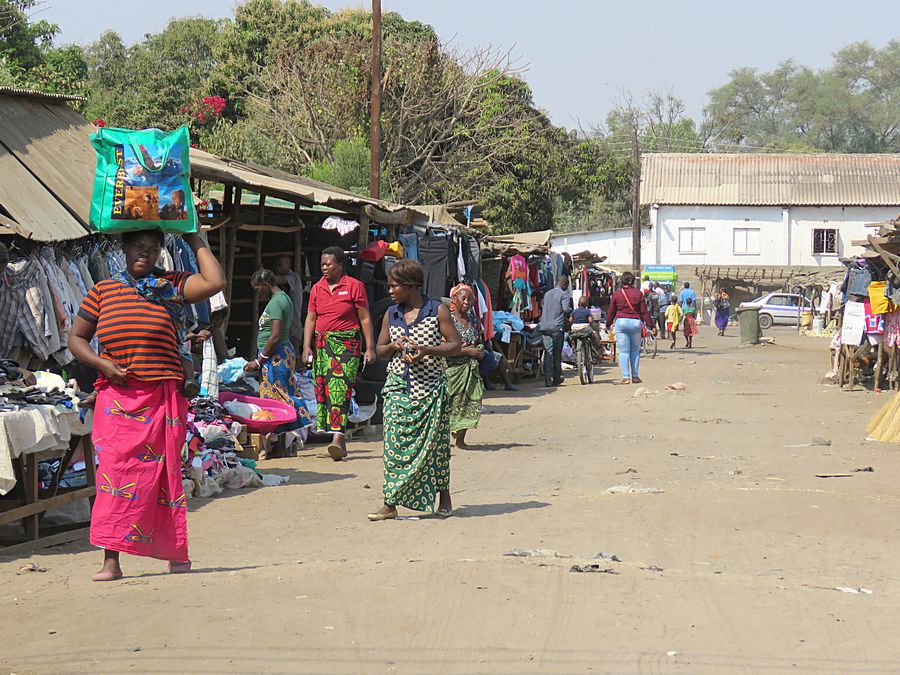
On our way from Livingstone, Zambia to Victoria Falls, we stopped
at a local Zambian market to walk around and interact with some of
the locals. Note the women wearing a traditional southern African wrap-
around skirt and the common practice of carrying goods and supplies on
heads, which is done by women, not men.
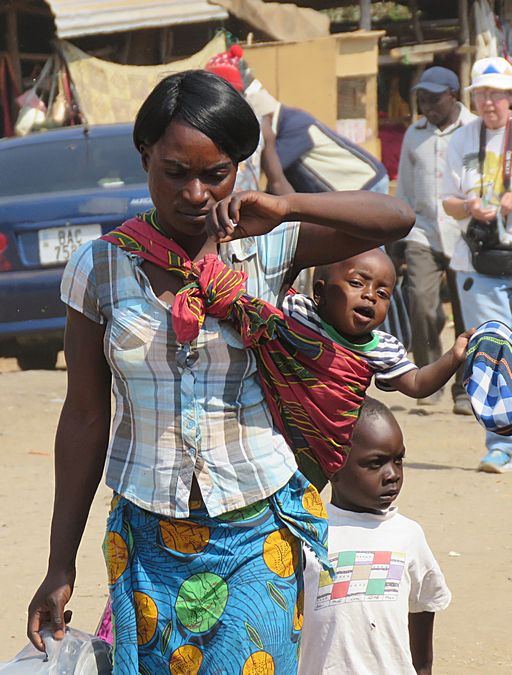
This woman is carrying her baby in the traditional way
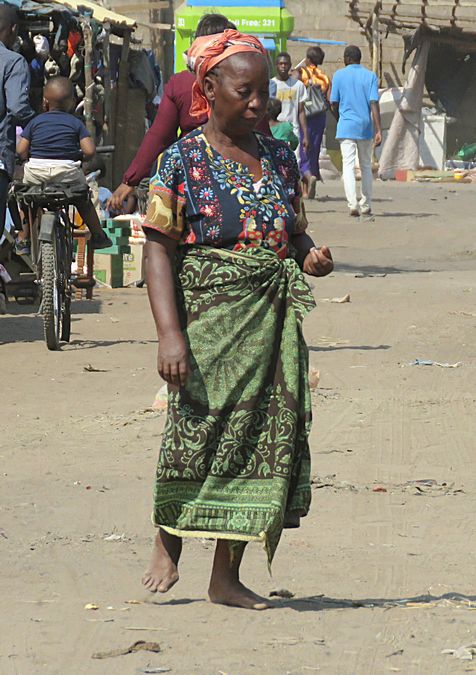
The traditional dress is very colorful.

A wide variety of clothing, household, and food items were for sale.

A local vendor selling the skirts. We purchased one for each of us and
later gave them away to the wife of a village chief in Zimbabwe, when
we visited their home.
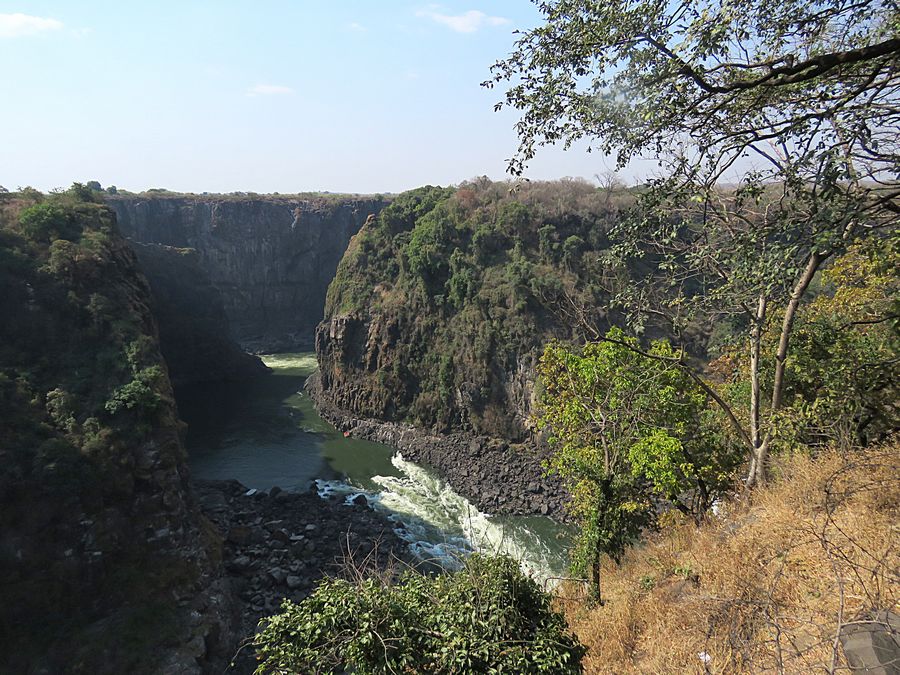
View of Zambezi River from Victoria Falls Bridge.
We walked across the Bridge from Livingstone, Zambia
to Victoria Falls, Zimbabwe. We visited the Falls several days later.
The Bridge crosses the Zambezi River just below the Victoria Falls and
is built over the second gorge of the Falls. Since the river is the border
between
Zimbabwe and Zambia, the bridge links the 2 countries.
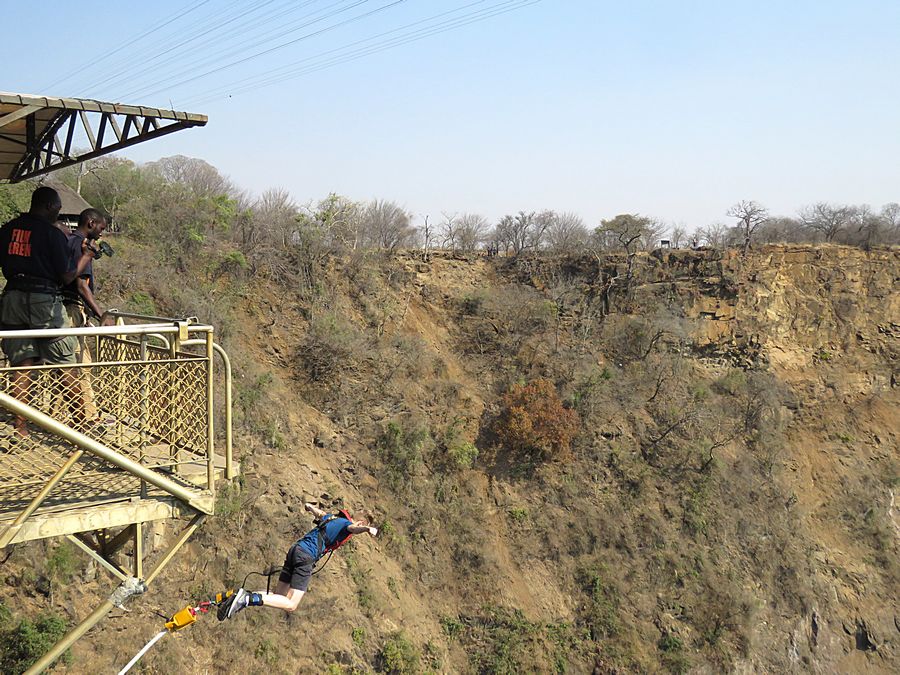
A tourist bungee jumping off Victoria Falls Bridge
heading down toward the Zambezi River.
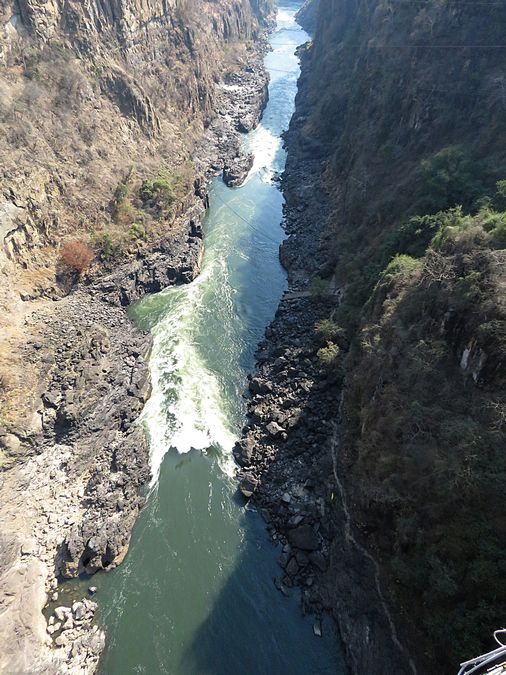
This is the view the bungee jumper would have as he was dropping.
No one in our group tried it. I would have had a heart attack on the
way down, I'm sure. When she arrived back up on the bridge, one young
woman,
who had jumped, said her back
was killing her. Not the
healthiest activity to engage in.
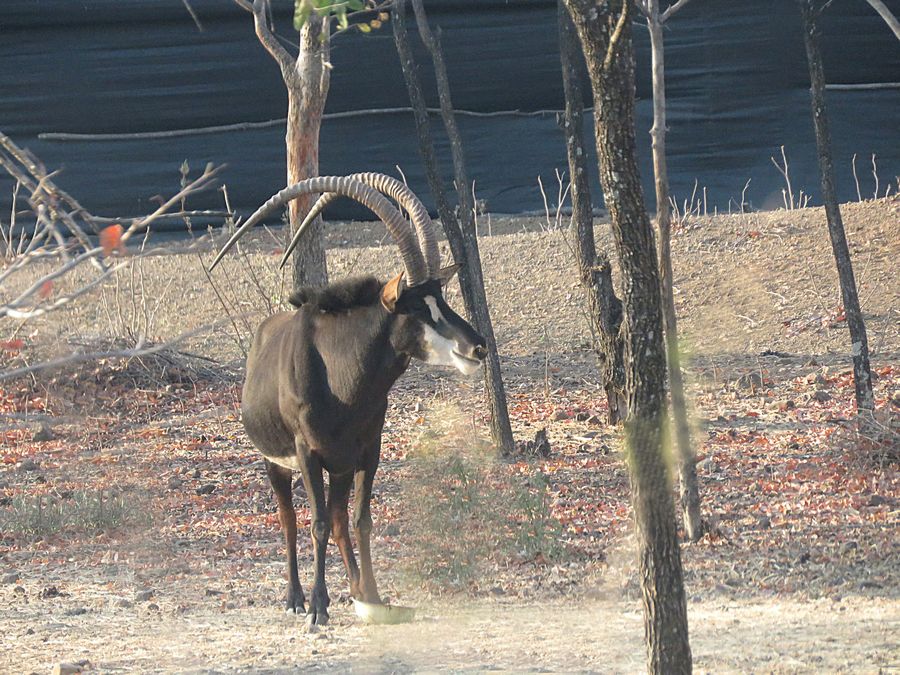
Sable antelopes are inhabitants of dry woodland, bush, and
grasslands. The male, like this one, has a glossy black coat, white
underparts,
and a head of black and white markings. We saw
a number of sable antelopes from the road looking into this preserve.
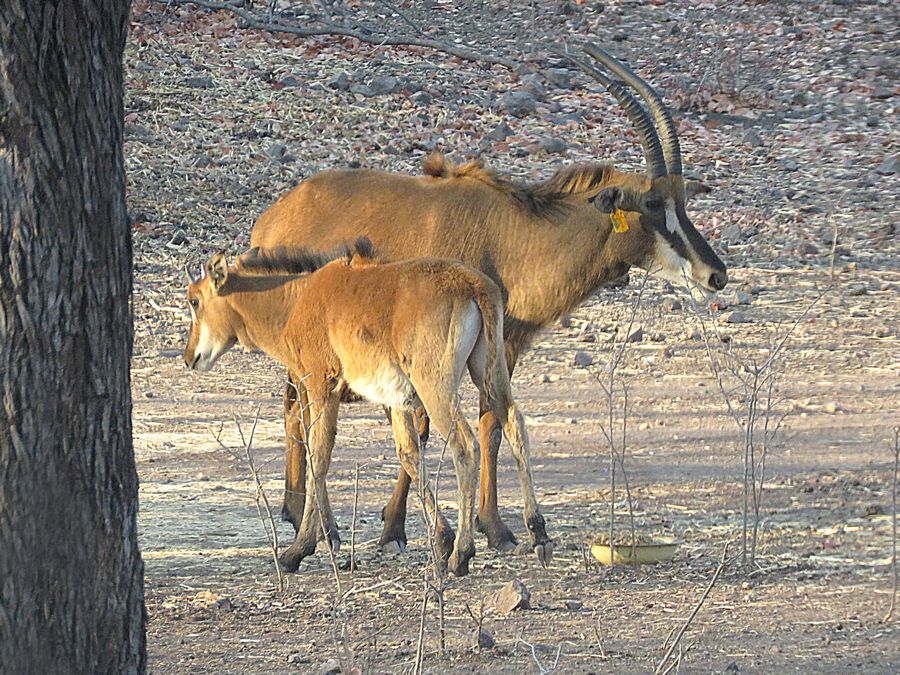
Sable antelopes: adult female with baby - The females are paler and more chestnut
in color. The horns are long and sweep backwards in an arc and are ridged.
Horns are less well developed in the female. They are often found in
herds of 10 to 20. They are primarily grazers of grasses and herbs, but
occasionally browse trees and bushes for leaves and shoots.

Lizard Buzzard - smallish, stocky raptor. Upper parts, head
and breast are gray. The base of the beak (the cere) is reddish,
with a black bill. It feeds on lizards, small mammals, amphibians,
and small insects.
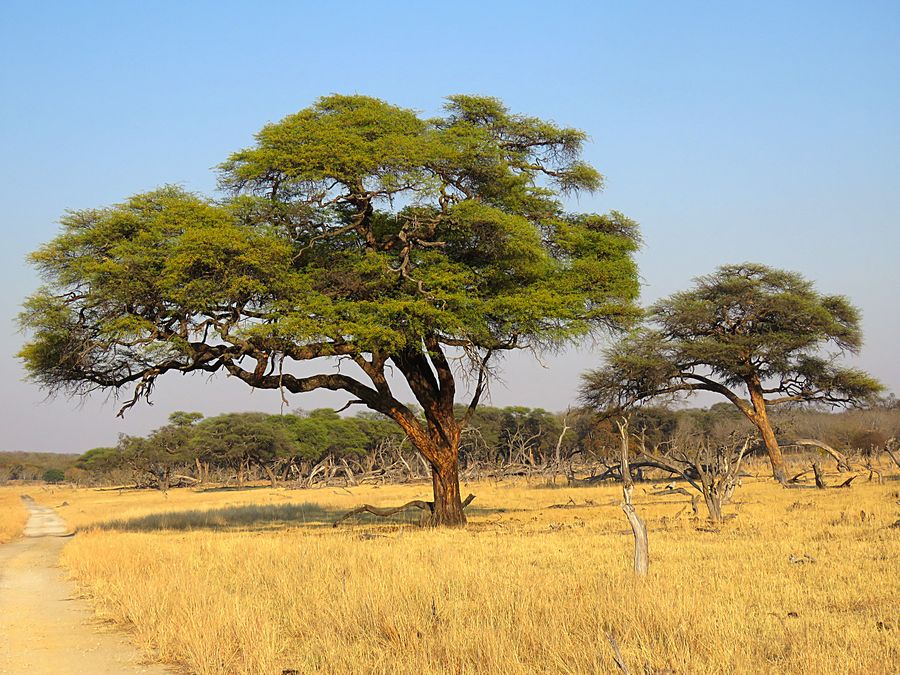
Camel Thorn Acacia tree. Its name refers to the fact that giraffe commonly graze
on the harder-to-reach
succulent leaves normally out of reach of smaller animals.
Giraffe have a specially-adapted tongue and lips that can cope with the vicious thorns.
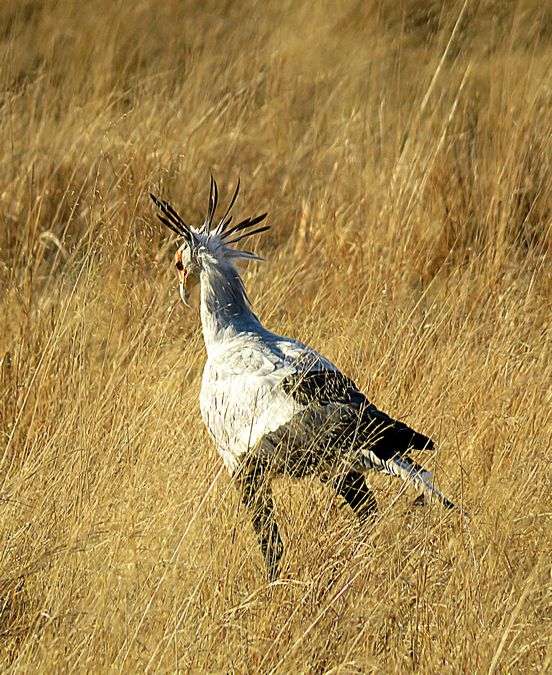
Secretarybird - large, ground raptor with long legs and
quill-like plumes protruding from the back of the head.
Bare face is orange and legs are pink. Chases snakes,
lizards, and rodents.
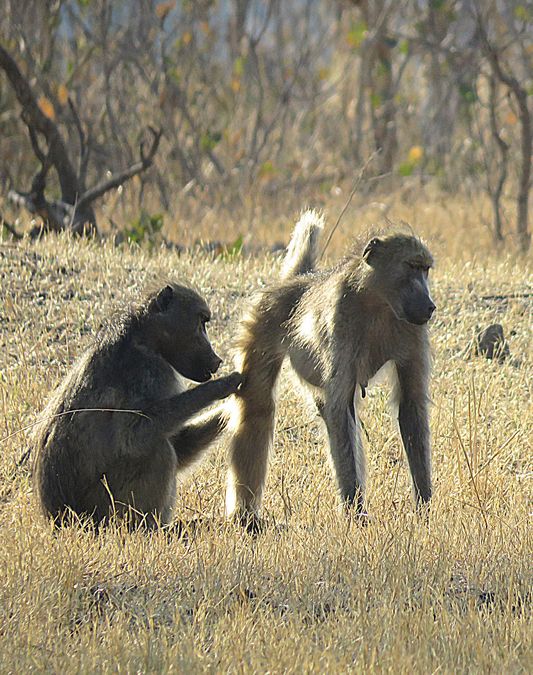
Baboons are primates with a grey-brown coat and long
bare snout. The male is larger than the female, which has
naked buttocks. Babies often ride on mother's back or even
underside. Lives in groups of up to 100, with adult males in a
strict hierarchy. Feeds on a variety of plants and animals.
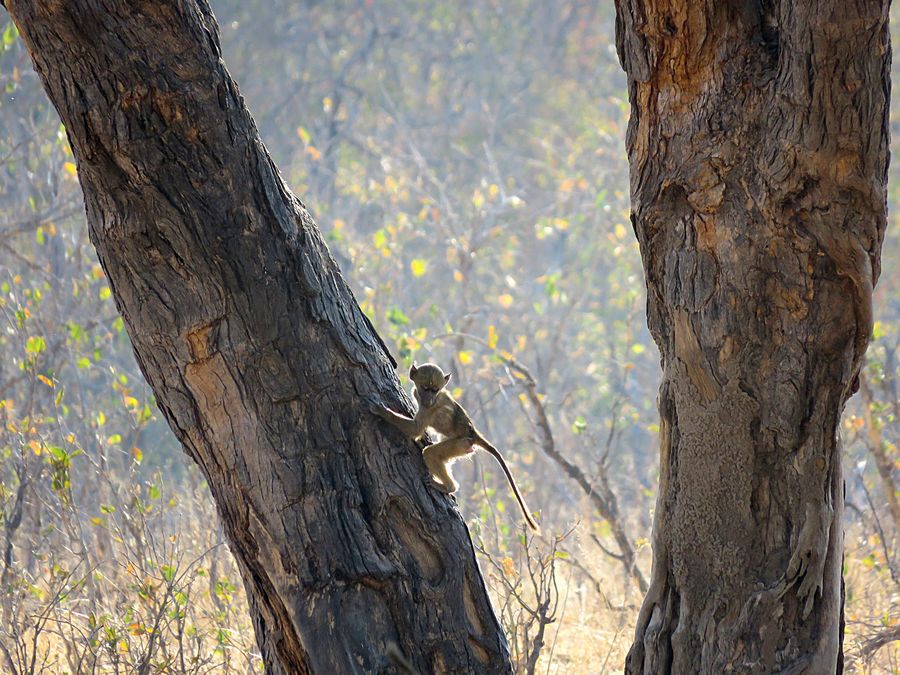
Baby baboon running up a tree
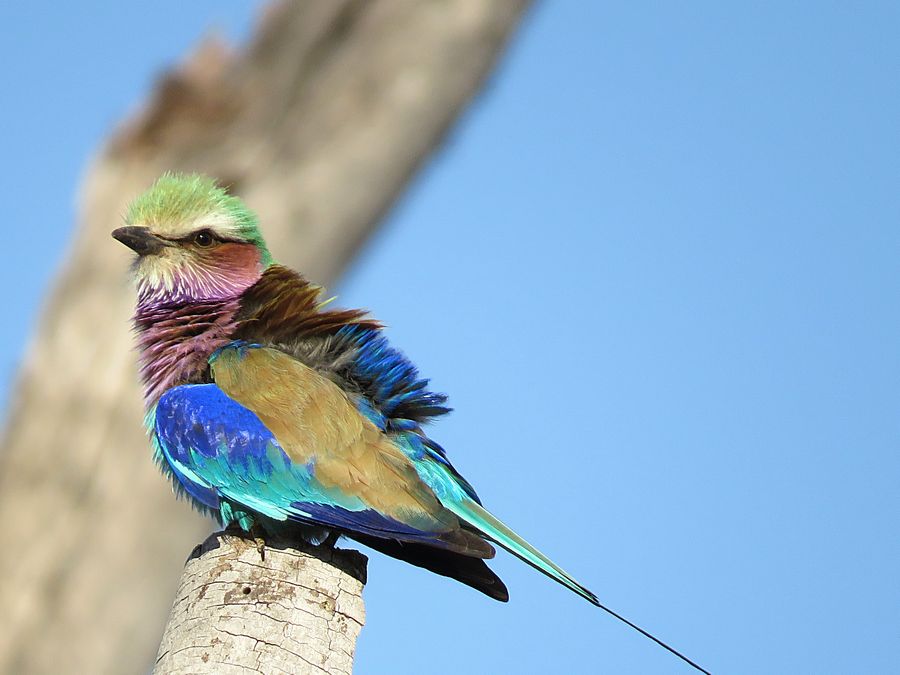
Lilac-breasted Roller, the only roller that has
a lilac throat and breast. It was breezy, so feathers
were flying.
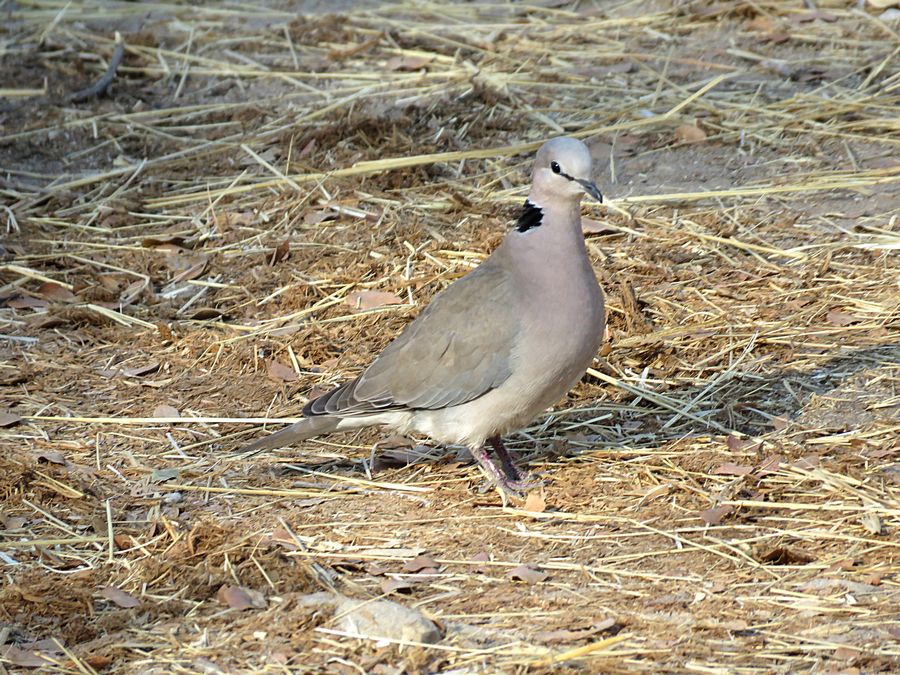
Cape Turtle Dove - pale gray dove with black neck collar
finely edged in white, black eyes, and pale gray breast.
Seeds are its main food.

Fork-tailed Drongo - glossy black bird with deeply forked
tail and red eyes.
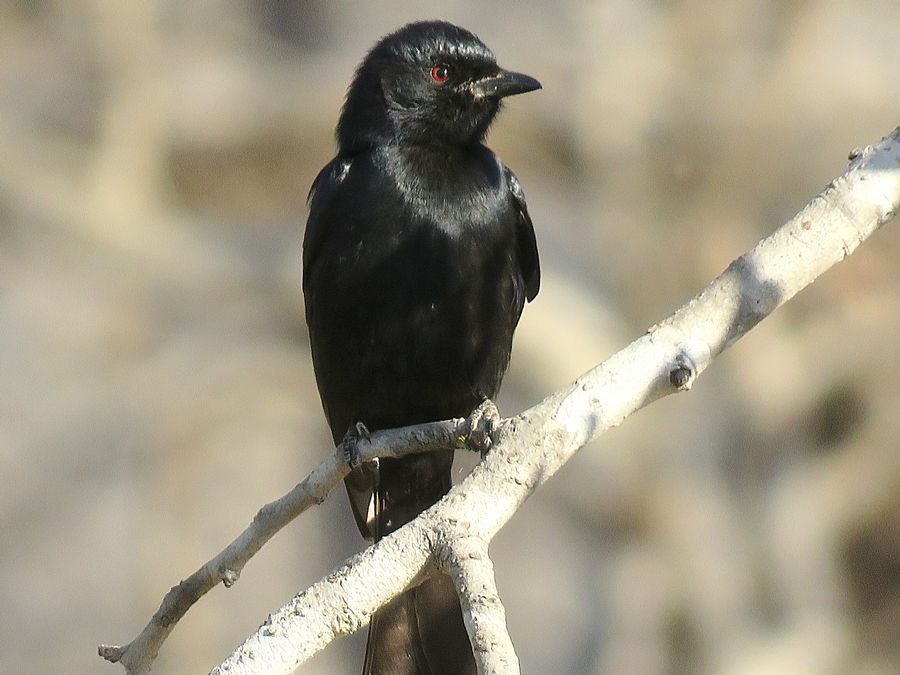
Different view of fork-tailed drongo
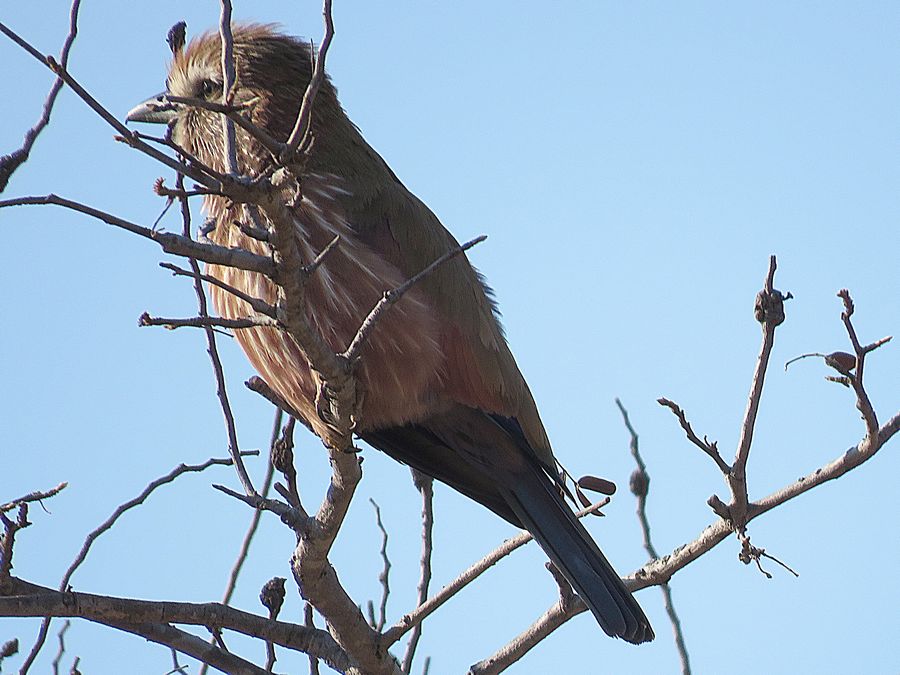
Purple Roller - Members of the roller family are multi-
colored. They are perch hunters. The purple roller
dives down to catch prey on the ground. It has olive-green
upper parts and a dark mauve breast heavily streaked with white.
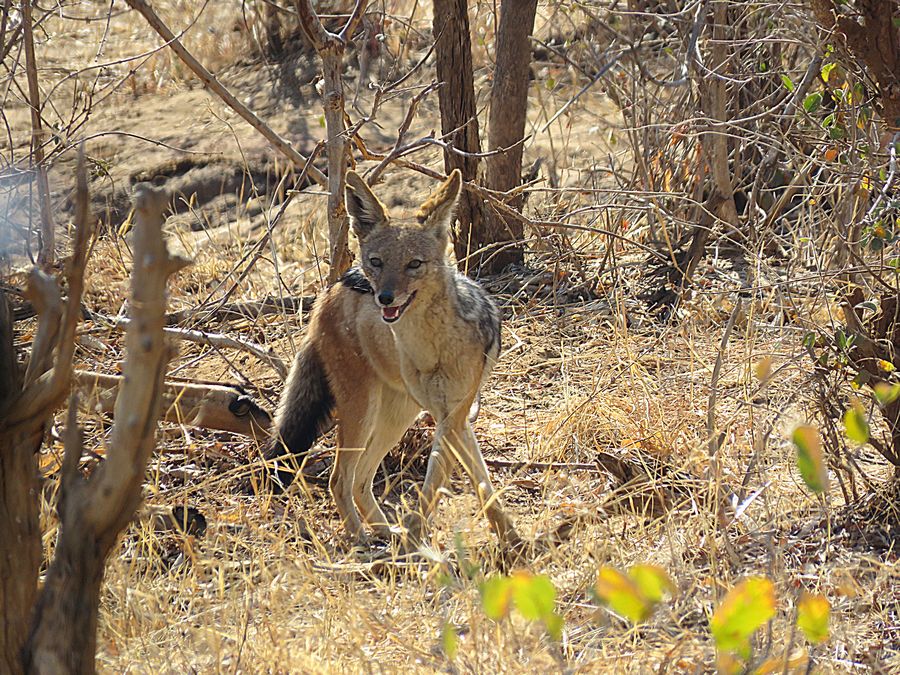
Black-backed jackal that was hanging out near a
lion's kill of a kudu. While they scavenge for a lot of
their food, they regularly catch small mammals and birds.
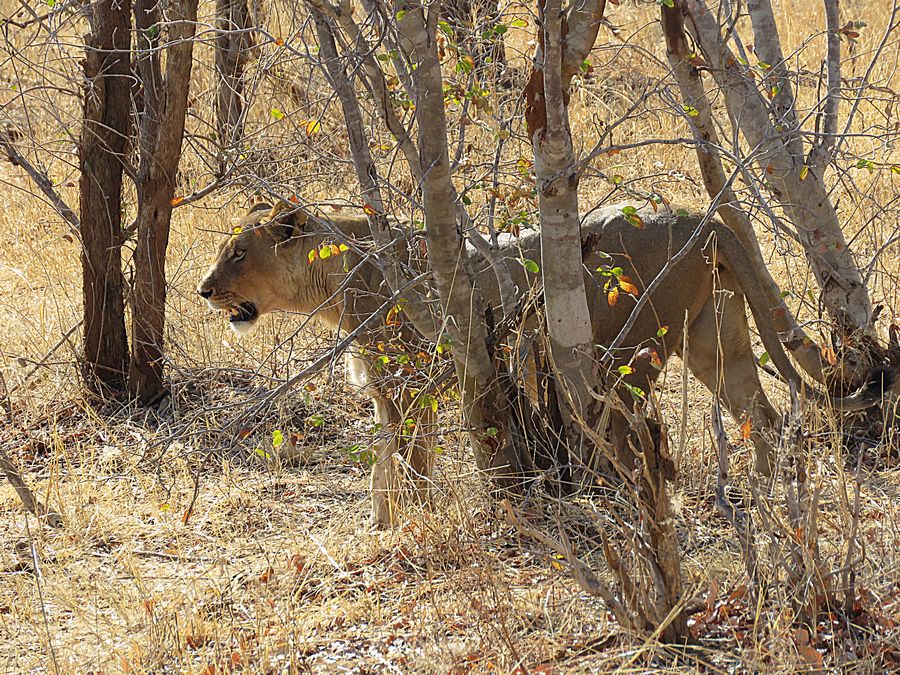
A female lion heading back toward the kudu carcass,
perhaps to let the jackal know whose property it was.
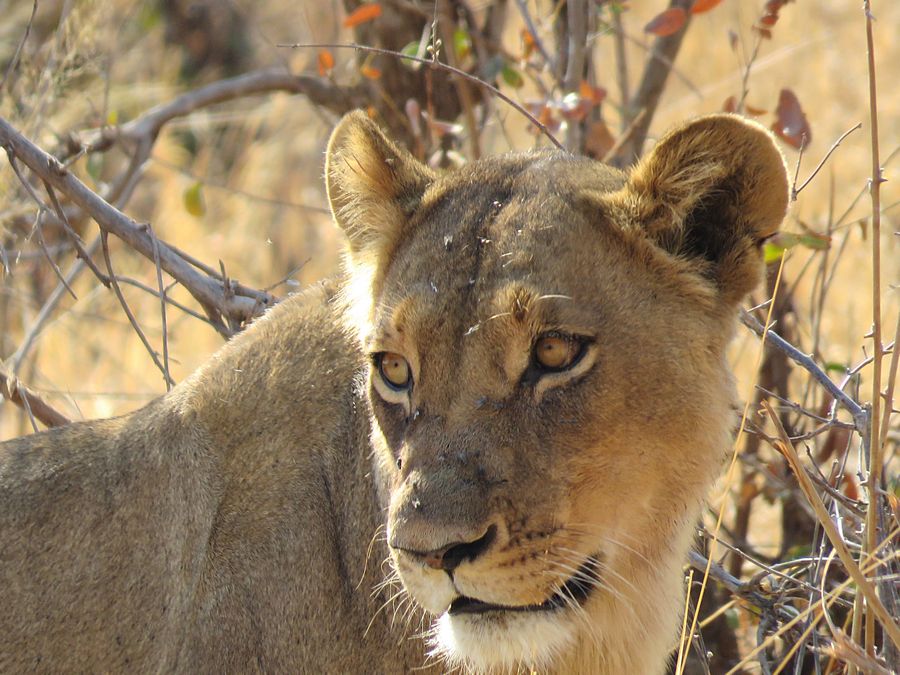
After the jackal took off, the lion relaxed nearby.

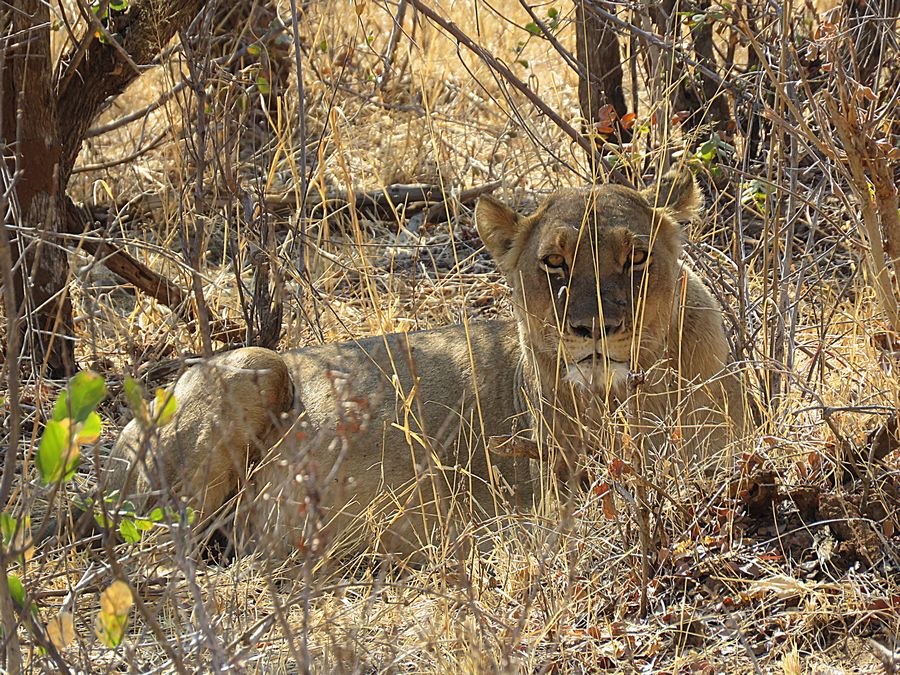
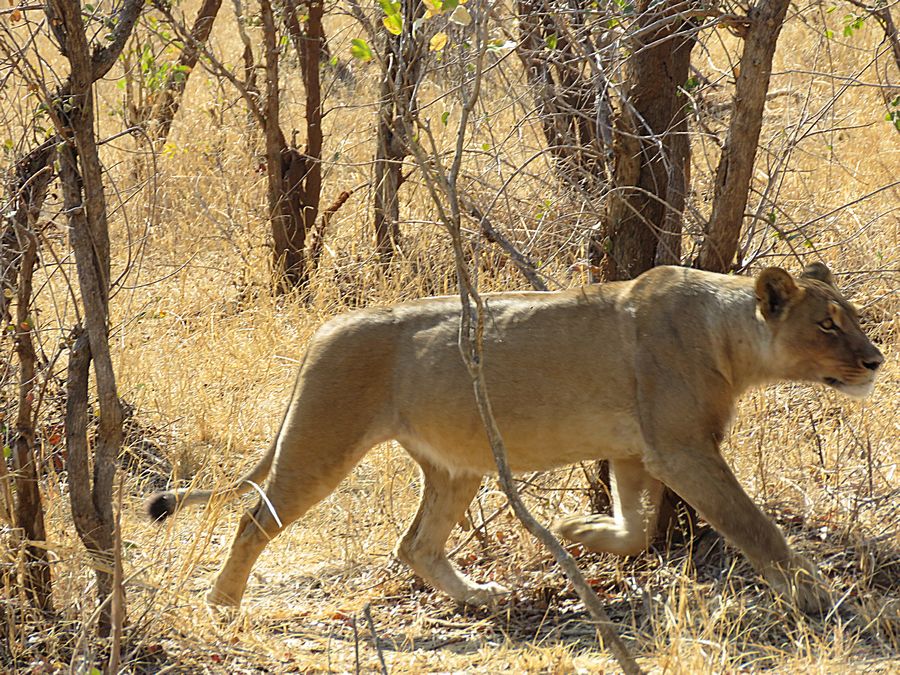
Not sure what she was looking at, but she took off in a hurry.
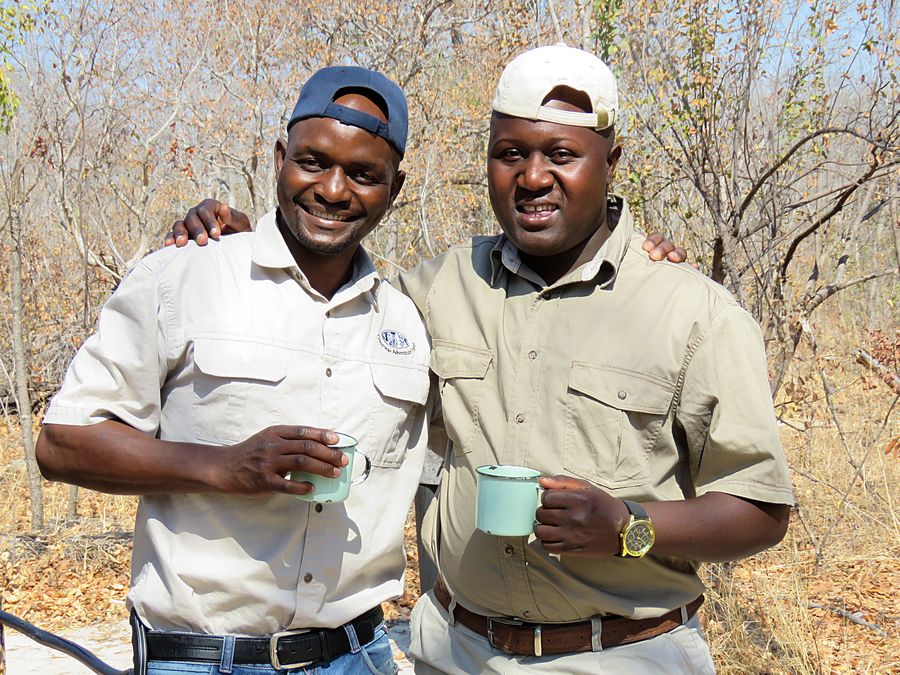
Our main guide Tapiwa (from Zimbabwe) on the left with one of our local guides.
We stopped for a snack and tea mid-morning on game viewing rides.

Painted Dogs, also known as African Wild Dogs, are unique to Africa,
and they are among this continent's most endangered species.
It is estimated that less than 7,000 remain in the wild. We saw painted
dogs at a nearby Painted Dog Conservation center. This photo was
taken at the rehab area where they were treating rescued, injured painted
dogs. Due to the possible negative connotation of the term "wild dogs,"
they are trying to change the name as part of the conservation effort.
Painted dogs often get caught in snares made by poachers.

Painted dogs cover vast distances within their home range.
They are very gregarious, living in large family groups and
will cooperatively hunt small to medium-sized animals. Once
a victim is selected, the pack will pursue it relentlessly until the
prey is totally exhausted.
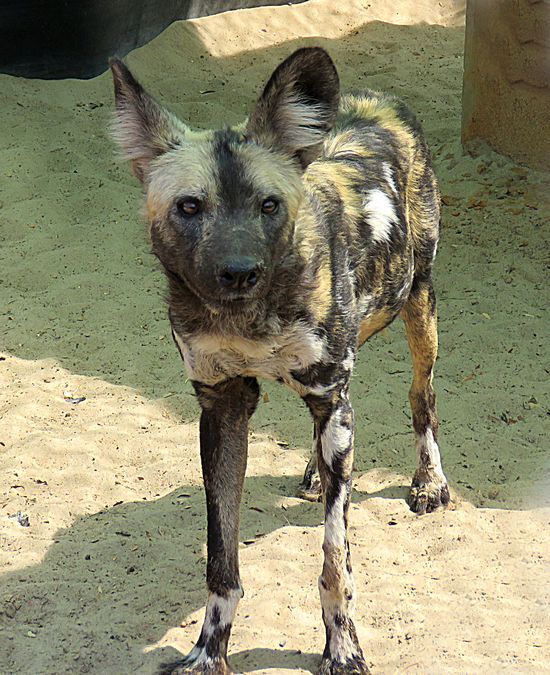
The entire family group cares for the babies. The babies are fed from
regurgitated food.
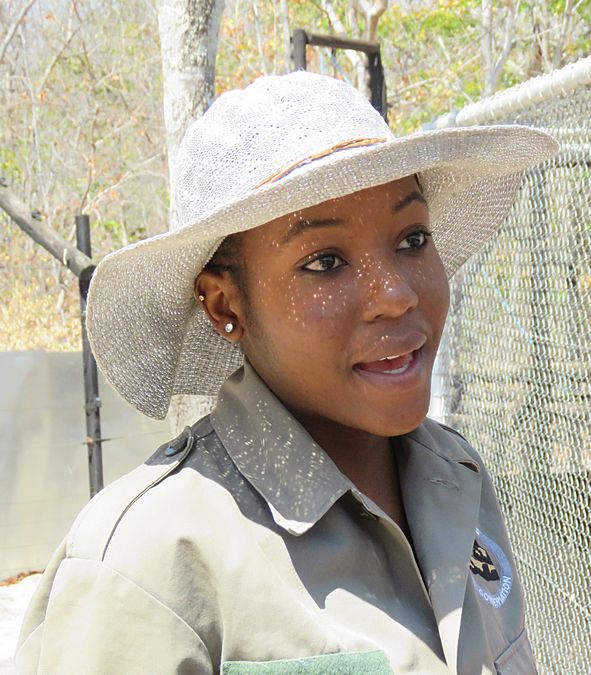
Worker at Painted Dog Conservation Center.
She is studying to have a career in wildlife protection
and
management.
Link to Part Three, Page Two - Hwange National Park, Zimbabwe
Pat's Home Page